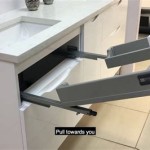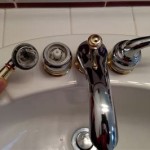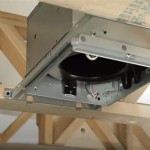Bathroom Under Sink Cabinets: Functionality and Aesthetics
Bathroom under sink cabinets are essential components of bathroom design, offering a blend of functionality and aesthetic appeal. They address the crucial need for storage in a typically limited space while contributing to the overall visual harmony of the bathroom. Understanding the different types, materials, installation considerations, and design trends associated with these cabinets is vital for homeowners and interior designers alike.
The primary purpose of an under sink cabinet is to conceal the plumbing fixtures associated with the sink, creating a neater and more organized appearance. Beyond concealment, these cabinets provide valuable storage space for toiletries, cleaning supplies, and other bathroom essentials. The layout and design of the cabinet can significantly impact its usability and the perceived spaciousness of the bathroom.
Selecting the right under sink cabinet involves careful consideration of dimensions, style, and functionality. The cabinet must be appropriately sized to accommodate the existing plumbing and fit comfortably within the available space. The style should complement the overall design aesthetic of the bathroom, whether it be modern, traditional, or contemporary. Functionality should be prioritized based on the specific storage needs of the user.
Types of Under Sink Cabinets
Under sink cabinets are available in a variety of configurations, each designed to meet specific needs and aesthetic preferences. Understanding the different types is crucial for choosing the most suitable option for a particular bathroom.
Freestanding Cabinets: These cabinets are self-supporting and rest directly on the floor. They are relatively easy to install and offer a wide range of styles and sizes. Freestanding cabinets are a versatile option that can be used in various bathroom layouts.
Wall-Mounted Cabinets: As the name suggests, wall-mounted cabinets are attached to the wall and do not touch the floor. This design creates a sense of spaciousness and simplifies cleaning. Wall-mounted cabinets are particularly well-suited for smaller bathrooms where maximizing floor space is essential.
Corner Cabinets: Corner cabinets are designed to fit into the corner of a bathroom, utilizing often-overlooked space. They are an efficient storage solution for bathrooms with limited wall space. Corner cabinets are available in both freestanding and wall-mounted configurations.
Double Sink Cabinets: These larger cabinets are designed to accommodate two sinks, providing ample storage space for multiple users. Double sink cabinets are often found in master bathrooms and provide a luxurious and functional addition.
Open Shelving Units: While not strictly cabinets, open shelving units offer an alternative storage solution for under the sink. They provide easy access to frequently used items and can create a more minimalist aesthetic. Open shelving units require more diligent organization to maintain a neat appearance.
Materials Used in Construction
The materials used in the construction of under sink cabinets significantly impact their durability, appearance, and resistance to moisture. Bathrooms are inherently humid environments, making moisture resistance a critical factor in material selection.
Wood: Solid wood cabinets offer a classic and durable option. However, solid wood is susceptible to moisture damage if not properly sealed and maintained. Hardwoods like oak, maple, and cherry are popular choices for their strength and aesthetic appeal. Softwoods like pine are more affordable but less resistant to moisture.
Plywood: Plywood is an engineered wood product made from layers of wood veneer glued together. It is more resistant to warping and cracking than solid wood and offers a good balance of durability and affordability. Marine-grade plywood is specifically designed for high-moisture environments and is an excellent choice for bathroom cabinets.
MDF (Medium-Density Fiberboard): MDF is another engineered wood product made from wood fibers and resin. It is smooth and easy to paint or laminate, making it a versatile option for cabinet construction. However, MDF is more susceptible to moisture damage than plywood and should be properly sealed and protected.
Particleboard: Particleboard is the least expensive engineered wood product, made from wood chips and resin. It is less durable and more susceptible to moisture damage than plywood or MDF. Particleboard is generally not recommended for bathroom cabinets due to its poor performance in humid environments.
Melamine: Melamine is a laminate coating applied to a substrate, such as particleboard or MDF. It provides a durable and water-resistant surface that is easy to clean. Melamine cabinets are an affordable and practical option for bathrooms.
PVC (Polyvinyl Chloride): PVC cabinets are made from plastic and are completely waterproof. They are an excellent choice for bathrooms where moisture resistance is a primary concern. PVC cabinets are available in a variety of colors and styles and are easy to clean and maintain.
Installation Considerations
Proper installation is crucial for ensuring the longevity and functionality of an under sink cabinet. While some homeowners may choose to install cabinets themselves, professional installation is often recommended to ensure a secure and accurate fit.
Measurement and Planning: Accurate measurements are essential for selecting the correct size cabinet. Measure the width, height, and depth of the available space under the sink, taking into account any existing plumbing or obstructions. Plan the layout of the cabinet, considering the placement of shelves, drawers, and other storage features.
Plumbing Considerations: The cabinet must be designed to accommodate the existing plumbing fixtures. Cutouts may be required in the back or sides of the cabinet to allow for pipes and drains. Ensure that these cutouts are properly sealed to prevent moisture damage.
Leveling and Securing: Whether installing a freestanding or wall-mounted cabinet, it is essential to ensure that it is level and securely attached. Use shims to level freestanding cabinets and secure them to the wall with screws or anchors. Wall-mounted cabinets must be securely attached to wall studs to support their weight.
Door and Drawer Alignment: After installation, check the alignment of doors and drawers. Adjust the hinges and drawer slides as needed to ensure smooth and even operation. Properly aligned doors and drawers not only look better but also prevent premature wear and tear.
Sealing and Protection: Seal any exposed edges or cutouts to prevent moisture damage. Consider applying a water-resistant coating to the interior of the cabinet to protect it from spills and condensation. Regularly inspect the cabinet for signs of moisture damage and address any issues promptly.
Design Trends and Styles
Under sink cabinets are available in a wide range of styles and designs, allowing homeowners to create a bathroom that reflects their personal taste and complements their existing decor. Staying abreast of current design trends can help to inform the selection process.
Modern Minimalism: Clean lines, simple geometric shapes, and a focus on functionality characterize modern minimalist cabinet designs. These cabinets often feature handleless doors and drawers and are finished in neutral colors like white, gray, or black.
Traditional Elegance: Traditional cabinet designs often incorporate ornate details, raised panel doors, and decorative hardware. These cabinets are typically made from solid wood and finished in rich, warm tones. Traditional styles evoke a sense of timelessness and sophistication.
Contemporary Chic: Contemporary cabinet designs blend elements of modern and traditional styles. They often feature sleek, clean lines but incorporate more textured materials and bolder colors than minimalist designs. Contemporary styles offer a balance of functionality and visual interest.
Farmhouse Charm: Farmhouse cabinet designs are characterized by their rustic and charming aesthetic. They often feature distressed finishes, shiplap detailing, and vintage-inspired hardware. Farmhouse styles create a warm and inviting atmosphere.
Floating Vanities: Floating vanities, which are wall-mounted cabinets, are increasingly popular for their space-saving design and modern aesthetic. They create a sense of spaciousness and allow for easy cleaning underneath. Floating vanities can be customized with a variety of materials and finishes to suit any bathroom style.
Color and Finish Trends: Neutral colors like white, gray, and beige remain popular choices for bathroom cabinets. However, bolder colors like navy blue, emerald green, and even black are also gaining popularity as accent colors. Matte finishes are increasingly preferred over glossy finishes for their subtle and sophisticated look.
Storage Solutions and Organization
The interior configuration of an under sink cabinet is just as important as its exterior appearance. Effective storage solutions and organizational features can maximize the usability of the cabinet and help to keep the bathroom clutter-free.
Adjustable Shelves: Adjustable shelves allow for customization of the storage space to accommodate items of varying sizes. They provide flexibility and adaptability, ensuring that the cabinet can meet changing storage needs.
Pull-Out Drawers and Trays: Pull-out drawers and trays provide easy access to items stored at the back of the cabinet. They are particularly useful for storing smaller items like toiletries and cleaning supplies.
Door-Mounted Organizers: Door-mounted organizers provide additional storage space on the inside of the cabinet doors. They are ideal for storing frequently used items like hairbrushes, makeup, and cleaning cloths.
Dividers and Compartments: Dividers and compartments help to organize items within the cabinet and prevent them from rolling around. They are particularly useful for storing smaller items like makeup brushes, cotton swabs, and first-aid supplies.
Baskets and Bins: Baskets and bins can be used to group items together and keep them organized. They are available in a variety of materials and sizes and can be easily removed for cleaning.
Under Sink Mats: Under sink mats protect the bottom of the cabinet from spills and leaks. They are typically made from waterproof materials and can be easily cleaned. Under sink mats are an essential addition to any bathroom cabinet to prevent moisture damage.
Proper planning and organization are essential for maximizing the functionality of an under sink cabinet. By incorporating the appropriate storage solutions and organizational features, homeowners can create a bathroom that is both stylish and functional.

Kleankin Pedestal Sink Storage Cabinet Bathroom Under With 2 Doors And Open Shelf Vanity Grey 834 431gy The Home Depot

Under Sink Storage Ideas For Your Home Designcafe

Best 17 Under Sink Organizer In 2024 Our Favorite Finds

18 Genius Under The Sink Storage Ideas And Organizers

Bathroom Under Sink Starter Kit The Container

Bathroom Vanities The Home Depot

Under Sink Storage Solutions That Will Get And Keep You Organized Small Bathroom Diy Pedestal
The Perfect Under Sink Organization Solution Thrifty Decor Diy And Organizing

Ari Kitchen And Bath Marina 48 In W X 20 5 D Vanity Weathered Fir With Marble Top Carrara White Farmhouse Basin Akb Weathfir The Home Depot

Under Sink Storage Ideas For Your Home Designcafe
Related Posts







